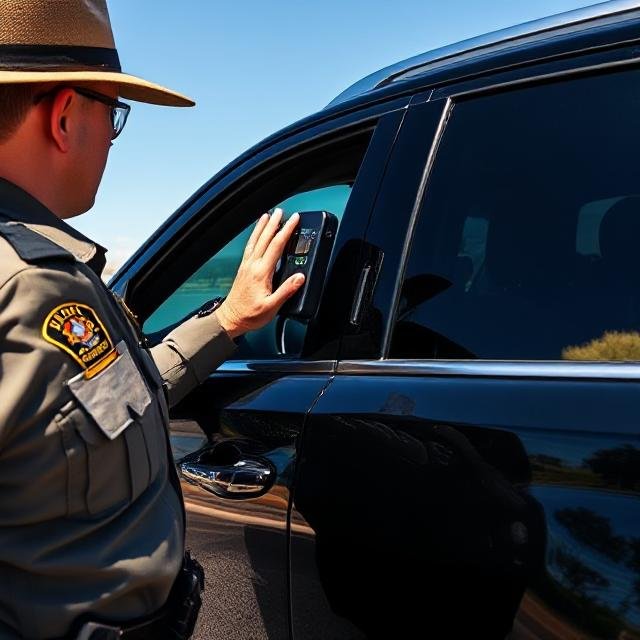Driving under the bright Texas sun is a way of life. From the sprawling highways between cities to the daily commute, the intense glare and heat can be more than just an annoyance—it can be a safety hazard and a drain on your vehicle’s air conditioning. This is why window tinting is an incredibly popular automotive modification across the Lone Star State. However, navigating the legal requirements for window tint can be confusing. Understanding the state of Texas tint laws is crucial not only for your comfort but also for your safety, your wallet, and ensuring you pass your annual vehicle inspection.
This guide breaks down the regulations into clear, easy-to-understand sections, empowering you to make informed decisions about your vehicle’s windows.
Table of Contents
Why Tint? Benefits Beyond Style
While the sleek appearance of a tinted vehicle is undeniable, the functional benefits are what truly drive its popularity:
- Heat Reduction: High-quality tint films can block a significant portion of infrared radiation, dramatically reducing the interior temperature of your car. This makes for a more comfortable ride and reduces the strain on your AC, potentially improving fuel efficiency.
- UV Protection: The sun’s ultraviolet rays are responsible for fading and cracking your vehicle’s interior (dash, seats, etc.) and, more importantly, can harm your skin. Modern window films can block up to 99% of these damaging UV rays.
- Glare Reduction: Glare from the sun or headlights of oncoming vehicles at night can be dangerous. Tint helps reduce this glare, minimizing eye strain and improving driving visibility.
- Enhanced Privacy and Security: Tinted windows provide a level of privacy for you and your passengers and can help deter thieves by obscuring the view of valuable items left inside your car.
- Safety: In the event of an accident, the film can help hold shattered glass together, reducing the risk of laceration from flying shards.
Decoding the Legal Limits: VLT Percentage
The core of Texas tint law revolves around a measurement called Visible Light Transmission (VLT%). This refers to the percentage of visible light that is allowed to pass through your window film and glass combined. A lower VLT% means a darker tint.
It is critical to remember that the law measures the combined VLT of the film and the factory glass. Since most factory glass has a slight tint already, adding a dark film can easily push you below the legal limit.
Here’s a breakdown of the legal VLT% for each window on a standard passenger vehicle (sedans, coupes, SUVs, and vans used for personal transportation):
Tint Darkness Regulations for Passenger Vehicles
- Front Windshield (AS-1 Line):
- Non-reflective tint is allowed on the top 5 inches of the windshield, often referred to as the “sun visor” strip.
- The remaining portion of the windshield must allow more than 25% of light in. Most factory windshields already meet this requirement. Applying any aftermarket film to the entire front windshield is illegal, unless it is a clear, non-reflective film that has no impact on VLT (e.g., a clear UV protectant).
- Front Side Windows (Driver & Front Passenger):
- Must allow more than 25% of light in.
- This is the most common violation. Many drivers desire darker tint up front for symmetry and heat reduction, but the law is strict on this point for visibility and safety reasons.
- Back Side Windows & Rear Window:
- Must allow more than 25% of light in.
- There is a crucial exception: If your vehicle has outside rearview mirrors on both sides, you may legally tint the back side windows and rear window to any darkness you prefer. However, it is highly recommended to avoid extremely dark tints (e.g., limo tint) for safety reasons when driving at night or in poor weather.
Additional Tint Regulations: Reflectivity and Colors
Beyond darkness, Texas law also regulates the style of tint:
- Reflectivity: Tint must not be more than 25% reflective. This means your tint cannot have a highly mirrored, chrome appearance. A slight sheen is acceptable, but a strong mirror finish is not.
- Tint Colors: Certain colors are explicitly prohibited to prevent confusion with official emergency vehicles. You cannot have red, amber, or blue tint on your windows.
Medical Exemptions for Tint Darkness
Texas state law recognizes that some medical conditions require individuals to limit their exposure to sunlight. A medical exemption allows for darker than legal tint.
- How to Qualify: You must obtain a written statement or certificate from a licensed physician or optometrist (M.D. or O.D.) that confirms you (or a regular passenger in the vehicle) have a medical condition that necessitates less exposure to light. The statement does not need to detail the condition, but it must be dated and signed.
- What it Allows: With a valid medical exemption, you are legally permitted to have tint on the windshield (below the AS-1 line) and front side windows that is as dark as necessary for your condition, provided it does not compromise safe driving.
- Documentation: You must keep a copy of the physician’s statement in your vehicle at all times and be prepared to present it to law enforcement during a traffic stop. You must also present it to an inspection station during your annual safety inspection.
Consequences of Illegal Tint
Choosing to ignore Texas tint laws can lead to several unpleasant outcomes:
- Failed Vehicle Inspection: Your vehicle will not pass its mandatory annual safety inspection if the tint is too dark. You will be forced to remove the illegal film before you can get your inspection sticker.
- Traffic Citations and Fines: A law enforcement officer can issue a ticket for illegal window tint. This is a moving violation that comes with a fine, which can vary by county.
- “Fix-It” Ticket: You may be given a certain number of days to remove the illegal tint and provide proof to the court to have the citation dismissed. This still involves the cost and hassle of removing and potentially reapplying new, legal film.
Frequently Asked Questions (FAQs)
Q1: I just bought a used car with dark tint. Am I responsible if it’s illegal?
A: Yes. As the current owner and operator of the vehicle, you are responsible for ensuring it complies with all state laws, including tint regulations. “The previous owner did it” is not a valid legal defense.
Q2: How is tint darkness measured?
A: Law enforcement and inspection stations use a device called a tint meter. It is placed on the window glass and gives a digital readout of the VLT%.
Q3: Are there different rules for SUVs and trucks?
A: The rules outlined above apply to all passenger vehicles. The laws for multi-purpose vehicles (MPVs) and trucks can have slight variations, but for most consumer SUVs and trucks, the passenger vehicle rules apply. It’s always best to err on the side of caution and follow the 25% VLT rule.
Q4: Where can I get my car tinted by a professional who knows the law?
A: Reputable window tinting shops across Texas are deeply familiar with state laws. A professional installer will typically refuse to install illegal tint to protect their business and your compliance. They can also provide a certificate confirming the film’s VLT% for your records.
Q5: Does the 5-inch sun strip on the windshield have a darkness limit?
A: The law does not specify a VLT% for the sun strip, but it must be non-reflective. Most shops use a dark, non-reflective film for this application.
Staying informed about the state of Texas tint laws ensures that you can enjoy all the benefits of window tinting without the stress of legal trouble or failed inspections. When in doubt, choose a legal, high-quality film and always work with a certified professional installer.

